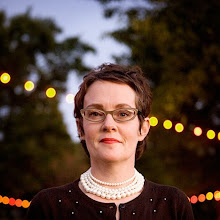
All these pictures are from a recent trip to Detroit, where I saw the following:
The fabled murals by Diego Rivera (above) and a coffered ceiling at the Detroit Institute of Art (below).


A carousel at the Detroit waterfront (above) and an oddly deflated yet violent sculptural memorial to Joe Louis by Robert Graham downtown (below).


A tale of two modes of transportation: GM headquarters (above), and the old Union station (below).


A tale of two mansions: The Whitney restaurant above, and another, nearby, below.

What did I learn from these disparate images and experiences?
Detroit is rich and devastated, the "first" car city in America (as said to me by Greg Wittkopp, director of the Cranbrook Art Museum) with Phoenix the last. There are many small businesses popping up in town, signs of the grass roots growth that creates communities--the top down, one company / one industry town is what leads to this kind of economic collapse (Phoenix, are you listening?) The early industrial leaders invested in the arts, but new multi-national corporations are not invested in place in the same way. How can we in the arts protect our institutions from the vagaries of institutional raiding?
Many of the people we encountered in Detroit said there are many valuable, interesting things and people in this diverse town, and perhaps as Detroit redefines itself, we'll learn more about how America will reinvent itself over the next 20 years. Artists like Rivera and Graham are witnesses to our communal hopes and dreams--what will this generation of artists say about this time of crisis?
I'll keep looking, let me know when you see signs of that vision.








